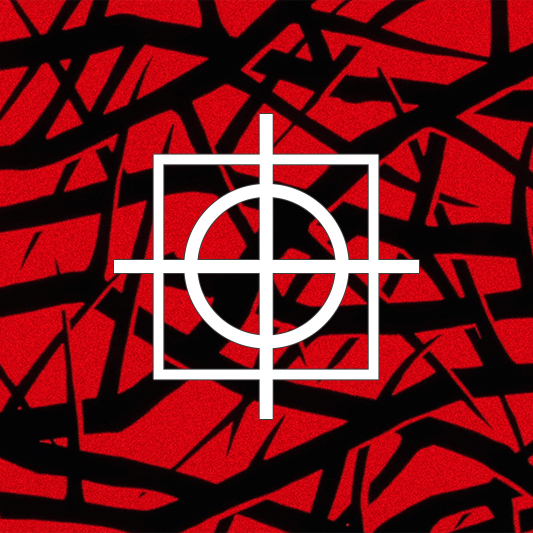人的一生,至少有三次改變自己命運的機會···
本文最初發表於我和妻子的微信公眾號: 人面魚Fisage, 有增改。
導讀
在踏上尋聖道路之前,基督帶著一顆訣別之心去妓院,向淪為風塵女子的瑪利亞懺悔。瑪利亞哭喊著:“留下你的錢,做你該做的,你和其它人沒有甚麼不同,你也是個可憐人。你走吧,每當我看見你,我的心都碎了。”

基督踏上漫長而荒涼的朝聖之路,在一望無際的沙漠里,一個“已亡人”接待了他。
基督在沙漠里用石頭畫了一個圈,決心向上帝尋找答案,“上帝啊,除非您用人的言語給我啓示,否則我不會離開這裡,若您給我指引,我會將自己奉獻。”
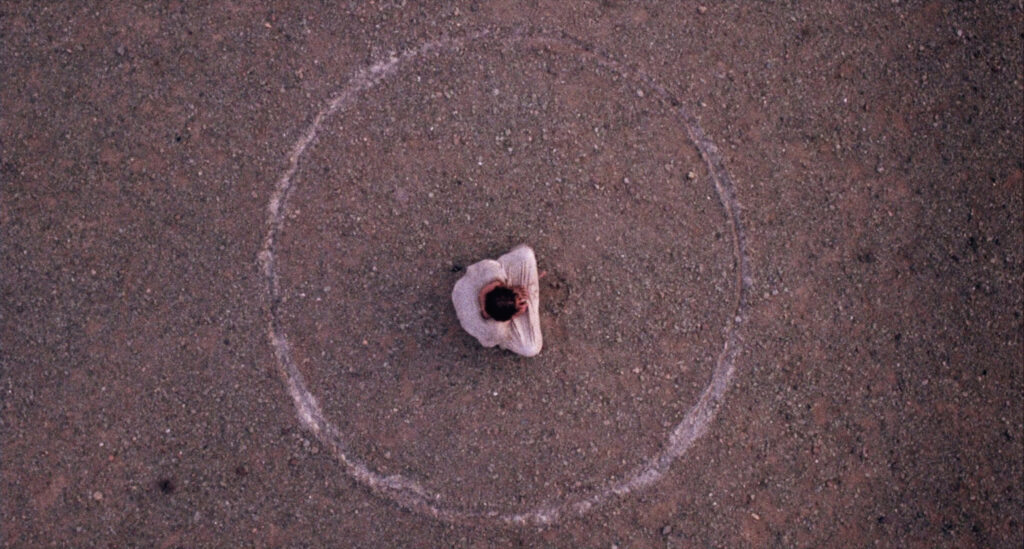
沙漠里的第一夜,一條婀娜誘人的黑蛇來了:“基督,我看見你內心的孤獨與恐懼,我聽見你脆弱的哭泣。幻化為美麗性感的女體,讓我來溫暖你。看著我,我們會上床,會有孩子,會有一個家。 基督,不要拯救世人,來,拯救你自己。”
沙漠的第十夜,來了一頭象徵權利和地位的威風凜凜的鬃毛獅子。“基督,我是你的內心,我知道你是如此的渴望與貪婪。你想要權利,想要地位,你是如此渴望去征服這個世界,被眾人仰望,你想要成為猶太之主,人類之王。”
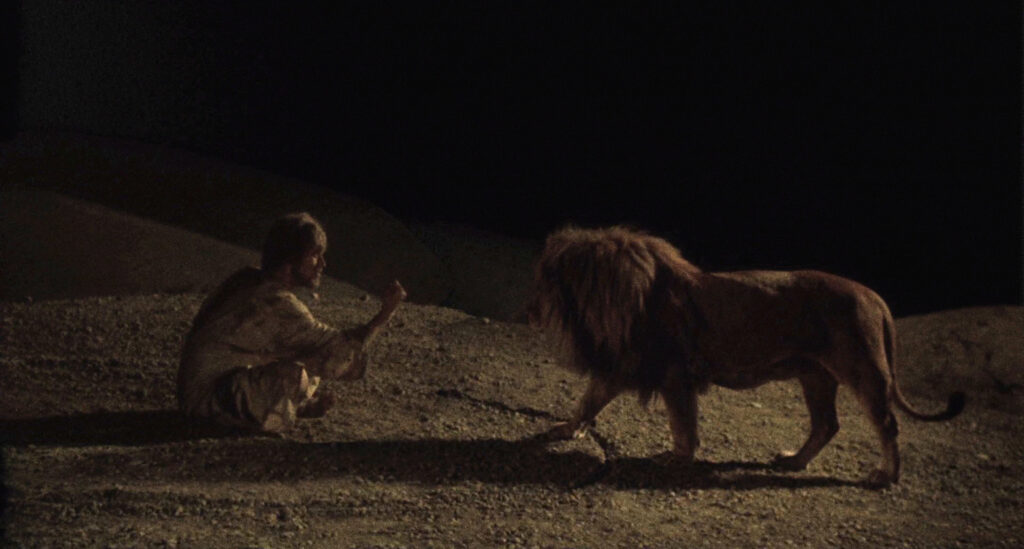
最後一夜,撒旦化身為跳動的火焰:“基督,我知道你是上帝的獨子,我們合作吧,我統治死者,你統治生者,在那萬世雄偉的聖殿寶座上,我們在一起,共享榮耀。”
拒絕誘惑的基督、飢寒交迫、奄奄一息。基他看見身邊一株嬌艷的蘋果樹,摘下一個蘋果放進嘴裡,竟然滿口鮮血。基督丟棄蘋果,拾起施洗者約翰的斧頭,義無反顧地砍下了象徵誘惑的蘋果樹,起身離開荒漠,堅定地走向殉道之途。
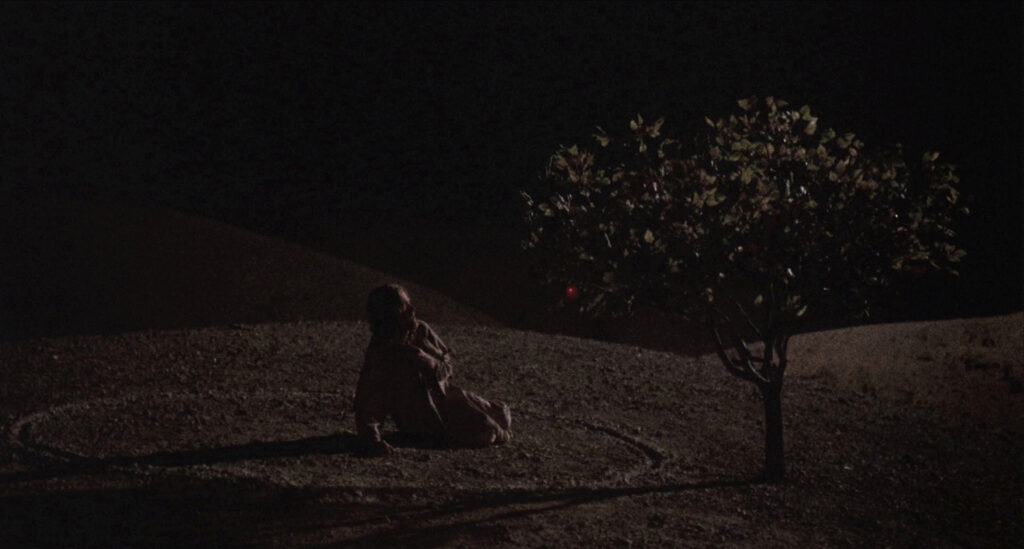

···漫漫黃沙,一人踽踽獨行,他在尋找什麼,是理想,是未來,是生活,是探險、是愛情,還是未知?
他走過沙漠,走過集市,走過湖泊,走過人群,就像從山上下來的先知,進入浮世,分享自己的心靈之眼看到的異象。
人屆中年,許多人,許多年輕時候光輝燦爛、猶如虹彩的夢想都漸漸褪色、淡去,曾經的追求和理想都慢慢溶於俗世的喧囂和熙攘,朝九晚五和柴米油鹽,生活的塵與土,早就浸潤直到骨子深處裏,曾經的堅持和不屑,則漸漸被生活的瑣碎、無聊和平庸所吞沒,年輕時代的鋒芒畢露和犀利颯爽,在眾人細碎的言說中日益磨平,長河流水,如一顆顆圓潤的鵝卵石: 無害、光滑、細密、不分彼此、毫無個性,曾經鮮豔、醒目的色彩也被千篇一律的灰色所覆滿。
或在午夜夢醒,晝間驚詫,有人也許會惶恐於自己如今的容顏面目,驚覺自己如今變成了曾經最為鄙夷輕視的之人,一點一點,被歲月和凡塵,染上暗啞而深澀之色彩,如同被遺棄的幽暗密室裏蒙上灰塵之古老明鏡。
有的人,也許會突然覺醒,從此斷絕當下,重拾當年的夢想追求;而更多的,則是在被啟示閃電震驚的瞬間之後,囈囈獨語幾句,就重新陷落沉迷於日常生活平庸、瑣碎而虛幻的快樂裏。人的一生,至少有三次改變自己命運的機會,也許,當妳意識到妳生活在理想和現實間斷裂所帶來的刺痛和分離之時,妳就已經站在命運的分叉路口上。
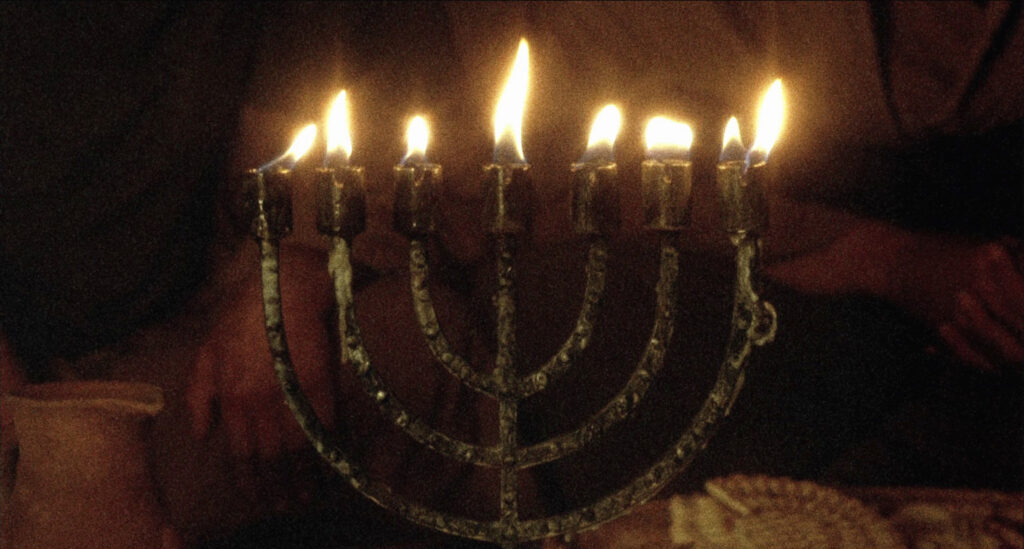
未擇之路
The Road not Taken
黃色的樹林裏,有兩條分叉小徑,
很遺憾,我不能同時涉足。
作為一個旅人,我長久佇立,
儘我所能,凝視著那
灌木中曲折而逝之小徑;
再看另一條,可能更好,
也許是一個更好的選擇,
因它長滿茂草,引人踏青;
雖然穿越那兒
將會同樣足跡遍佈,
在那個清晨,兩條路同樣
灑滿落葉,沒有汙穢的足跡。
噢,我將前者留待他日踏足!
我知道,這路將會引來另一條路,
我懷疑自己能否回首。
我帶著嘆息訴說這故事
在許多許多歲月以後:
樹林裏有兩條分叉的道路,而我-
我選擇了一條人少踏足的路,
這必將帶來所有不同。
羅伯特‧弗羅斯特
(Robert Frost [1])

基督上格格他山(Golgotha, Γολγοθᾶς, [2])的故事已經被傳頌歌詠了無數世代,除了“偽經(Pseudepigrapha, ψευδής ἐπιγραφή, [3])”和民間傳奇,唯有馬丁‧斯科塞斯(Martin Scorsese, [4])的電影造成了軒然大波,這部電影,在許多天主教和基督教信仰占統治主導地位的國家遭到封殺和取締,甚至被列為不可言說之禁忌。除了斯科塞斯對於尼可斯‧卡贊扎基斯(Νίκος Καζαντζάκης, Nikos Kazantzakis, [5])小說令人震驚的劇本改編以外,他還把基督描繪成一個有血有肉,俱有人性種種弱點,被一個不明不白的啟示推上聖子之路,甚至不能識破魔鬼撒旦(שָׂטָן, Σατανᾶς, Satan, [6])誘惑的凡人。這對於那些把信仰視為神聖不可侵犯的虔誠教徒來說,不啻於是褻瀆與冒犯。我現在還記得,當我第一次在課堂上播放這部電影的時候,就有一個篤信基督教的小男孩,跑上講台來阻止我。不過, “上帝歸上帝,凱撒歸凱撒(Render unto Cæsar the things that are Cæsar’s, and unto God the things that are God’s. Ἀπόδοτε οὖν τὰ Καίσαρος Καίσαρι καὶ τὰ τοῦ Θεοῦ τῷ Θεῷ. [Matthew 22:21], [7])”。每個英雄傳說在每個時代都會俱有不同的詮釋和解讀,在我們這個視覺媒體盛宴歡愉的時代,為甚麼不可以對一個約定俗成的傳奇進行另一種解釋? 藝術本就應該挑戰陳規與權威,沒有表達自由,何來創造?
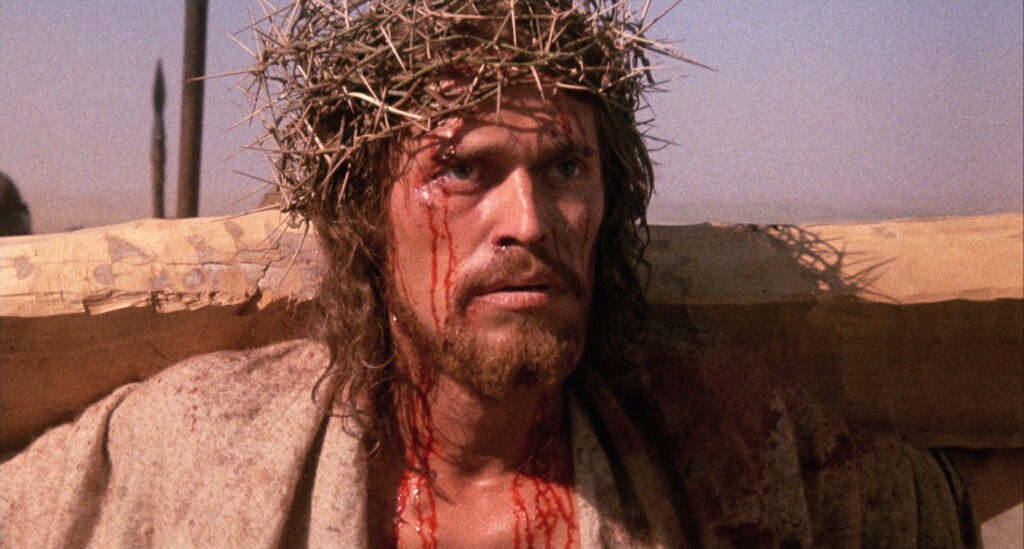
基督在歷經流亡、放逐、監禁及死亡的磨難和屈辱後,在他背負十字架登上格格他山,被施以磔刑(Crucifixion of Jesus, crucifixio, [8])的時候,撒旦化身天使,引誘他離開,帶著他娶了抹大拉的妓女瑪利亞(Mary Magdalene, מרים המגדלית, Μαρία ἡ Μαγδαληνή, [9]), 並開始接踵而來的婚姻家庭生活,終至臨死一刻,他的十二使徒(Apostles, Απόστολος, [10])現身,打破了撒旦的陰謀和花招,基督意識到,這種種世俗生活的情景,只是撒旦施展的小小把戲與黃粱一夢,當他最終在十字架上再次睜開眼睛的時候,他的傳奇寫就,神劇終於落幕。
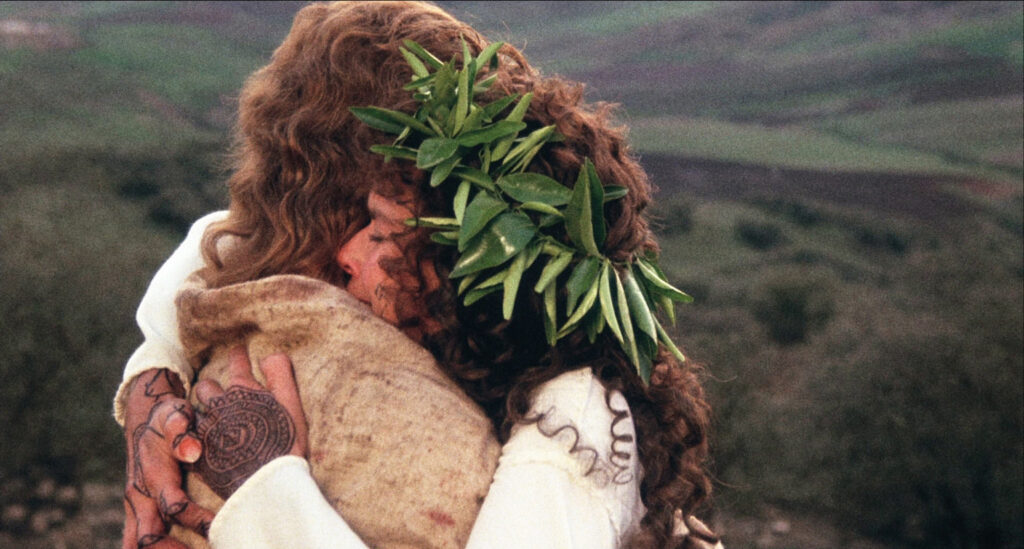
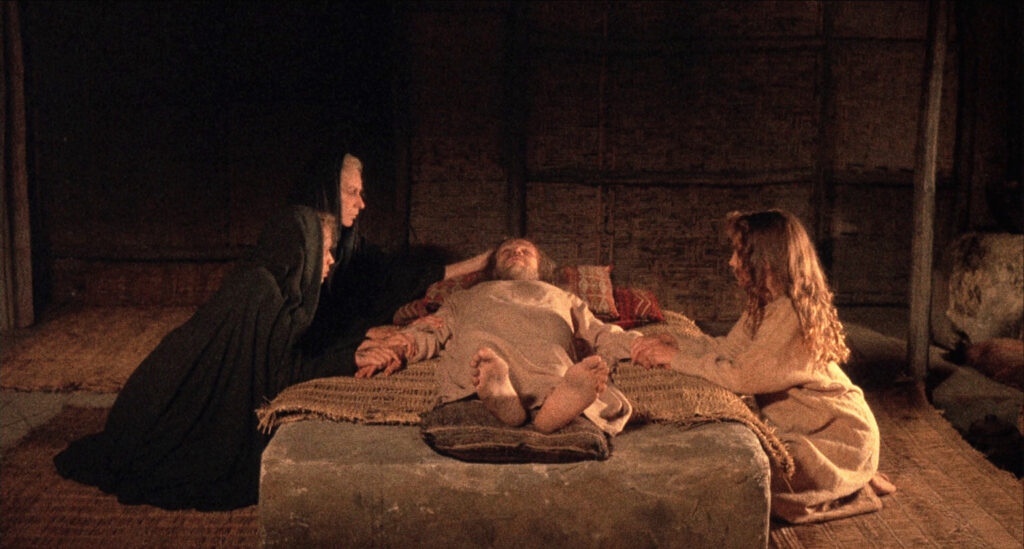
非常有趣的是,除了妓女瑪利亞及基督的改編以外,背叛者猶大(Judas Iscariot, יהודה איש-קריות, Ὶούδας Ὶσκαριώτης, [11]),則完全成為一個正面形象–從一開始是嘗試謀殺基督的殺手,再到他的第一個追隨者,堅定的捍衛者和戰士,到最後為了成全基督的偉大而甘當“叛教者(Apostasy, apostasĭa, ἀποστασία, [12])”, 背負千古罵名的悲情人物–猶大從一開始的憤怒、懷疑、堅定在到最後的諍言,成為一個貫穿劇情的關鍵性人物,其重要性僅次於基督。如果,每一部歷史都是一部當代史(ogni vera storia e storia contemporanea, [13]),那為甚麼每一個傳奇不可以是一個當代的傳奇呢?

基督歷經了困惑、憤懣、堅定、猶豫和逃避,他在沙漠裏遊蕩、尋找啟示,他在人群裏佈道,聚集信徒,他在神殿裏咆哮,激起民眾怒火,他還歷經過權力、財富和名望的誘惑,但最終,僅在他被釘上十字架的那一刻,平凡生活的誘惑,才讓他幾乎沈淪其間並歷經了普通人生活之點點滴滴。縱觀所有,芸芸眾生所選擇的平常道路,才是最俱有誘惑力和腐蝕性的,權力、財富和名望,凡此種種,不過是依託於生活本身的鮮豔色彩和閃爍光芒,猶如朵朵浪花在炎炎烈日下反射出色彩斑斕而絢麗之泡沫,唯有無窮無盡的平凡生活,如浪濤,如同平衡而恆定的鐘擺,日復一日、不知疲倦地,衝擊著矗立於大海深處的礁石燈塔。

[1]. 羅伯特‧李‧佛洛斯特(Robert Lee Frost, 1874年3月26日-1963年1月29日), 美國詩人。
[2]. 各各他山(Golgotha, Calvary, Γολγοθᾶς), 意譯為“髑髏地”, 此地乃是羅馬統治以色列時期耶路撒冷城郊之山,據《聖經·新約全書》中的四福音書(如馬太福音27:33, 約翰福音19:17)記載,神的兒子耶穌基督曾被釘在十字架上,而這十字架就是在這各各他山上。多年來,“各各他山”這個名稱和十字架,一直是耶穌基督被害受難的標誌。
[3]. 偽經(Pseudepigrapha, ψευδής ἐπιγραφή), 意為“托名假造之作品”, 亦作秘經(απόκρυφα)。在基督宗教,因教父時期為了系統化神學內容以回應異端的挑戰,乃將整個基督宗教(包含它前身猶太教時期)的經典分為正典(Canon, κανών)、次經(Deuterocanonical books, δευτεροκανονικός)與偽經三個層級。
[4]. 馬丁‧斯科塞斯(Martin Scorsese, 1942年11月17日-), 著名美國電影導演、監製、編劇、演員和電影歷史學家,代表作《計程車司機(Taxi Driver)》、《紐約黑幫(Gangs of New York)》和《禁閉島(Shutter Island)》
[5]. 尼可斯‧卡贊扎基斯(Νίκος Καζαντζάκης, Nikos Kazantzakis, 1883年2月18日-1957年10月26日), 希臘小說家,詩人,散文和遊記作家,記者。代表作《希臘左巴(Βίος και Πολιτεία του Αλέξη Ζορμπά)》, 《基督最後的誘惑(Ο Τελευταίος Πειρασμός)》和《奧德賽: 現代續篇(Οδύσσεια)》。
[6]. 撒旦(שָׂטָן, Σατανᾶς, Satan), 亞伯拉罕宗教中的邪惡存在,會引誘人類犯罪或出錯。在基督教和伊斯蘭教中,他常被視為曾經十分虔誠且美麗的墮天使或鎮尼,卻背叛神,而神卻暫時允許它有權統治墮落世界和眾多魔鬼。在猶太教中,撒但常作為抽象概念惡的衝動。
[7]. “上帝歸上帝,凱撒歸凱撒(Render unto Cæsar the things that are Cæsar’s, and unto God the things that are God’s. Ἀπόδοτε οὖν τὰ Καίσαρος Καίσαρι καὶ τὰ τοῦ Θεοῦ τῷ Θεῷ. [Matthew 22:21]), 來自聖經《對觀福音(Synoptic Gospels)》中的《馬太福音(Matthew)》。
[8] 耶穌被釘十字架(Crucifixion of Jesus, crucifixio), 在新約聖經中記載的事件,在耶路撒冷的各各他,耶穌遭受十字架刑罰,並因此死亡。
[9] 抹大拉的妓女瑪利亞(Mary Magdalene, מרים המגדלית, Μαρία ἡ Μαγδαληνή),在《聖經‧新約》中,被描寫為耶穌的女追隨者。羅馬天主教、東正教和聖公會都把她作為聖人。
[10]. 使徒(Apostle, Απόστολος), 原意是擔負使命的人、傳遞信息的人。在基督教,是特別的宗教頭銜,最早用於耶穌所親自揀選的十二名門徒。
[11]. 背叛者猶大(Judas Iscariot, יהודה איש-קריות, Ὶούδας Ὶσκαριώτης), 耶穌的十二使徒之一,被指責為了銀元的賄賂,背叛耶穌,使耶穌被處死。
[12]. 叛教者(Apostasy, apostasĭa, ἀποστασία, [12]), 按照基督教,叛教就是背棄或反叛上帝。有些叛教者會自稱認識並事奉上帝,卻拒絶接受某些或全部《聖經》所提出之教義。
[13]. 每一部歷史都是一部當代史(ogni vera storia e storia contemporanea), 語出義大利哲學家貝內德托·克羅齊(Benedetto Croce)之著作《歷史學之理論與敘事(Teoria e storia della storiografia)》(Seconda edizione riveduta BARI, GIUS. LATERZA & FIGLI Topogra -Editori-Librai, 1920, P. 4-P. 5)
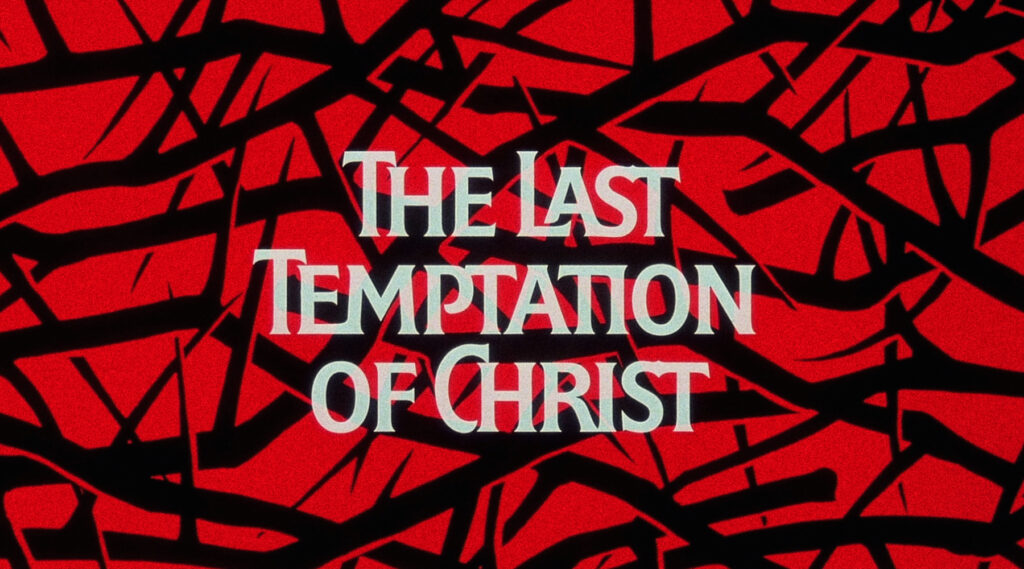
EN
This article was first published on WeChat official account: 人面魚Fisage, co-authored by me and my wife, it has been revised since then.
There are certainly three times that you can change the destiny of your life, at least...

…Sand after sand, a lonely man is walking in the desert, what is he searching? Is it dream, is it future, is it life, is it exploration, is it love, or is it something unknown?
He walks through the desert, cross the market, among the people, like a prophet from the mountains going down to the floating mundane world, sharing the visions in his eyes of spirit.
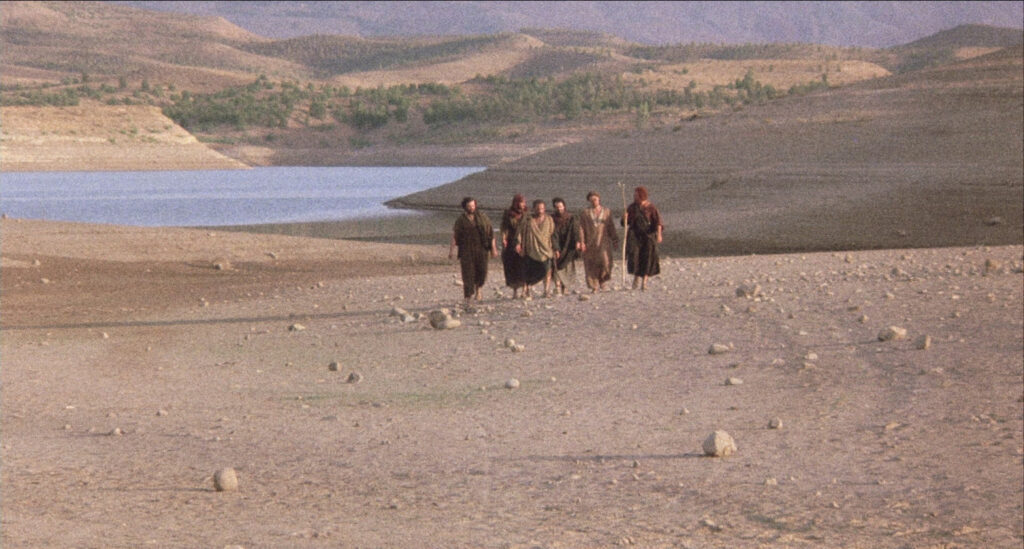
After thirties, many men, with their glamorous, splendid dreams in the younger days fading away like rainbows, those old pursuits and dreams entangled and mixed in the noisy crowds. The dust and dirt of life, the daily routines and daily messies, have deeply, silently penetrated and infused into their hearts and souls, devouring inside. The bygone insistence and distain, are shallowed by the messies, the borings, the mundanes and the mediocres of the daily life. The sharpness and brightness of the younger days, are flattened and blunted in the chatting and gossiping of the common people, just like the round, smooth pebbles on the river bed: harmless, smooth, flat, delicate, obtuse, one like another, characterless, all those once brilliant, vivid colours are all covered and mossed by the same dull shades of grey.
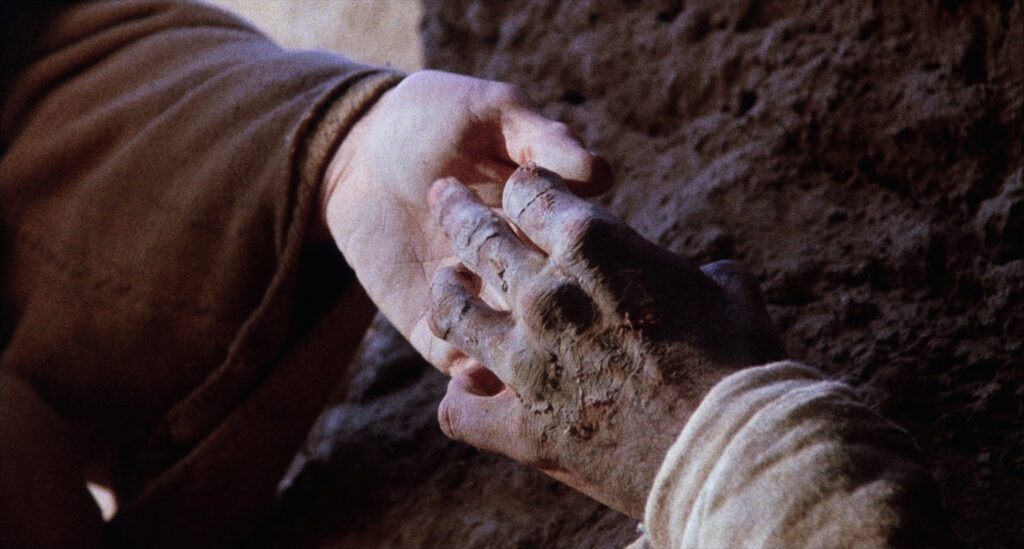
Perhaps, at the midnight, some may be awake from the nightmares, some may be shocked in the shivering sunshine at the twelve noon. Some may be anxious by their face and countenances at the present, stroke by the fact that they have become someone they once disliked and disgusted the most. Little by little, dyed with those dark, matt colours by the time and mundane world, just as the forsaken, dusty, ancient mirrors in the shadow of a deserted, secret, forgotten, dark chamber.
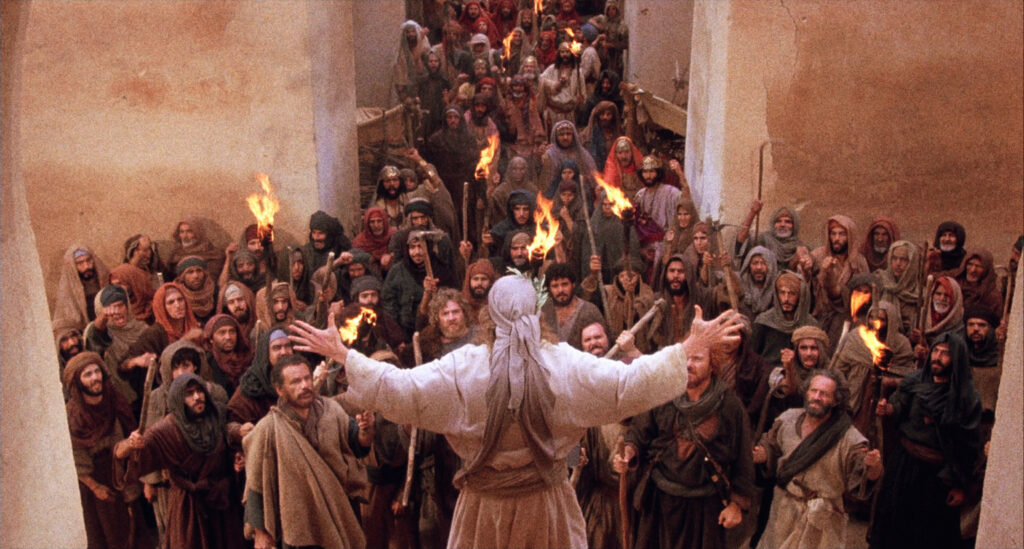
Some may be renaissant and revive at once, cut and refuse the messies of the daily life from this moment forward, retaking their dreams from their younger days. Though much more will only murmur a few words to themselves then sink into the mediocre, messies and illusive pleasures of their daily life once again after the initial apostolic flashy shock as the thunder. There are certainly three times that you can change the destiny of your life, at least. When you aware and realize the stings and pains between your ideal life and the rigid, stubborn real life, you may be just standing at the cross roads of your fate.
The Road Not Taken
Two roads diverged in a yellow wood,
And sorry I could not travel both
And be one traveler, long I stood
And looked down one as far as I could
To where it bent in the undergrowth;
Then took the other, as just as fair,
And having perhaps the better claim,
Because it was grassy and wanted wear;
Though as for that the passing there
Had worn them really about the same,
And both that morning equally lay
In leaves no step had trodden black.
Oh, I kept the first for another day!
Yet knowing how way leads on to way,
I doubted if I should ever come back.
I shall be telling this with a sigh
Somewhere ages and ages hence:
Two roads diverged in a wood, and I —
I took the one less traveled by,
And that has made all the difference.
by Robert Frost [1]

The story of Jesus going up to Golgotha(Calvary, Γολγοθᾶς, [2]) has been told and sung for countless generations, besides the Pseudepigrapha(ψευδής ἐπιγραφή, [3]) and common folklore, Martin Scorsese’s [4] film has had a great impact on the societies and has stirred waves of controversies when it released. The film was banned or censored for several years in many countries with high population of Christianity, even its name was on the list of prohibition once. Besides the shocking and striking plot based on Nikos Kazantzakis’(Νίκος Καζαντζάκης, [5]) famous novel with the same title, Scorsese also depicted Christ as a ordinary, fleshy man with all the weakness of the mankind, who was pushed onto the route of “Son of God” by some unknown prophecies, without recognizing the disguise of Satan(שָׂטָן, Σατανᾶς, [6]). This is, for those faithful and devout Christians with holy, inviolable belief, kind of blasphemy and violation, a shit on the face. I still remember, the first time when I played this film in the classroom, a Christian boy stood up and came to stop me. But “render unto Cæsar the things that are Cæsar’s, and unto God the things that are God’s. (Ἀπόδοτε οὖν τὰ Καίσαρος Καίσαρι καὶ τὰ τοῦ Θεοῦ τῷ Θεῷ. [Matthew 22:21], [7])” Every heroic legend will be interpreted and explained in every new era. In this pleasing, abundant visual banquet of our times, why not have another interpretation for a conventual legend? Art itself should challenge the formal rules and authorities — without free expression, how will creation be possible?
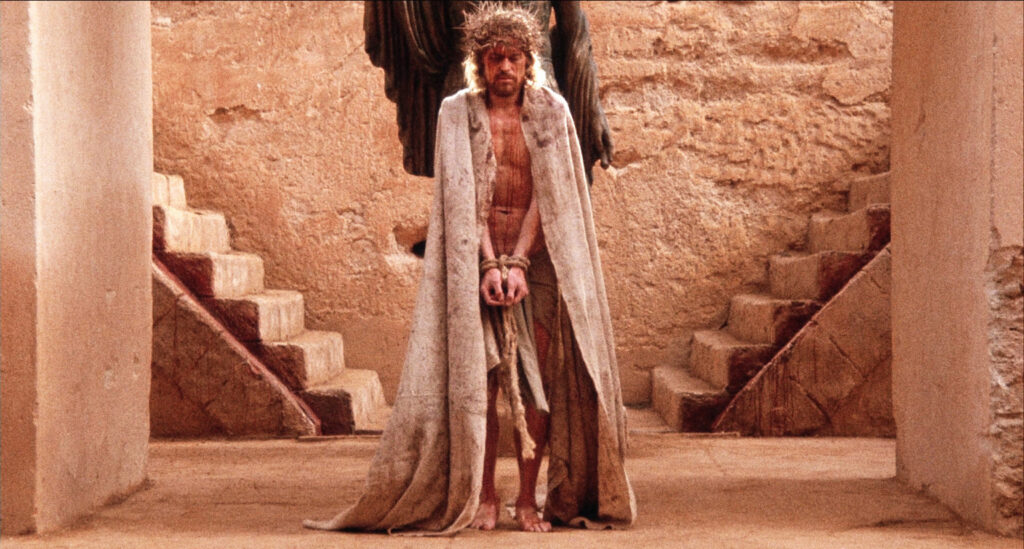
After experiencing exile, abandon, imprisonment, threat of death and humiliation, Jesus Christ went onto Golgotha with cross on his back, the one he once built for others. When he suffered from the crucifixion(crucifixio, [8]), Satan came to tempt him in form of an angel, guiding him to meet Mary Magdalene(מרים המגדלית, Μαρία ἡ Μαγδαληνή, [9]) he married her and started a daily, ordinary, family life with her. Until his last breath, his twelve Apostles (ἀπόστολος, apóstolos, [10]) appeared, broke the illusions and tricks of Satan. Then Jesus Christ realized that all the scenes in his daily life are just a little trick and dream created by the Dæmon. When he opened his eyes on the cross once again, his legend was written, and the theatre was done.
Interestingly, besides Merry Magdalene and Jesus Christ, the betrayer Judas Iscariot (יהודה איש־קריות, Ὶούδας Ὶσκαριώτης, [11]), is a vivid yet honest character. From an assassin trying to murder Jesus, then his first fellow, faithful and loyal defender and warrior, and the final “betrayer(Apostasy, apostasĭa, ἀποστασία, [12])” forming the great, saint, holy Jesus Christ, he is a passionate yet tragic persona. His initial angries, doubts, then faith and the final loyal words makes him a key character through the plot, whose importance is second to that of Jesus Christ. If every history is a contemporary history(ogni vera storia e storia contemporanea, [13]), why not every legend become another contemporary legend?
Jesus experienced puzzles, angst, faith, doubts and evades, he wondered in the desert, searching for enlightenment; he preached in the crowds, gathering believers; he roared in the temples, arising the anger of the people; he experienced the temptation of power, wealth and fame, and finally, at the moment of his crucifixion, the common daily life successfully tempted him and made him sink into it. All in all, the usual, daily path that common people take is the most tempting and corroding one. All the power, wealth and fame are just some additional vibrant, vivid colours and sparks of life itself, like the beautiful, splendid bubbles of waves in the hot, golden sunshine. Only the endless common daily life, like the tides and waves, like the eternal pendulums, striking the reef and beacon standing in the deep ocean, endlessly, tirelessly, indefinitely.

[1]. Robert Lee Frost (March 26, 1874 – Jan. 29, 1963), American poet.
[2]. Golgotha (Calvary, Γολγοθᾶς), the place where Jesus Christ suffered from crucifixion.
[3]. Pseudepigrapha (ψευδής ἐπιγραφή) are falsely-attributed works, texts whose claimed author is not the true author, or a work whose real author attributed it to a figure of the past.
[4]. Martin Charles Scorsese (Nov. 17, 1942-) is an American director, producer, screenwriter, actor, and film historian, his famous films are “Taxi Driver,” “Gangs of New York” and “Shutter Island.”
[5]. Nikos Kazantzakis (Νίκος Καζαντζάκης, 18 Feb. 1883 – 26 Oct. 1957) was a Greek writer and poet, celebrated for his novels and poetry, which include “Zorba the Greek (Βίος και Πολιτεία του Αλέξη Ζορμπά),” “The Last Temptation of Christ (Ο Τελευταίος Πειρασμός)” and “The Odyssey: A Modern Sequel(Οδύσσεια).”
[6]. Satan (שָׂטָן, Σατανᾶς), also known as the Devil, is an entity in the Abrahamic religions that seduces humans into sin or falsehood.
[7]. “Render unto Cæsar the things that are Cæsar’s, and unto God the things that are God’s. (Ἀπόδοτε οὖν τὰ Καίσαρος Καίσαρι καὶ τὰ τοῦ Θεοῦ τῷ Θεῷ. [Matthew 22:21])”, the beginning of a phrase attributed to Jesus in the synoptic gospels.
[8]. The crucifixion of Jesus (crucifixio) occurred in 1st century Judea, most probably between the years 30 and 33 AD. Jesus’ crucifixion is described in the four canonical gospels, referred to in the New Testament epistles, attested to by other ancient sources, and is established as a historical event confirmed by non-Christian sources, although, among historians, there is no consensus on the precise details of what exactly occurred.
[9]. Mary Magdalene (מרים המגדלית, Μαρία ἡ Μαγδαληνή), iterally translated as Mary the Magdalene or Mary of Magdala, is a figure in Christianity who, according to the Bible, traveled with Jesus as one of his followers. She is said to have witnessed Jesus’ crucifixion and resurrection.
[10]. Apostle (ἀπόστολος, apóstolos, ‘one who is sent away’), The word in this sense derives from New Testament Greek and was used for the original Twelve Apostles of Jesus, as well as a wider group of Early Christian figures including Paul.
[11]. Judas Iscariot (יהודה איש־קריות, Ὶούδας Ὶσκαριώτης, died c. 30–33 AD) was, according to the New Testament, one of the twelve original disciples of Jesus Christ, and son of Simon Iscariot (only mentioned in John 6:71 and John 13:26). He is known for the kiss and betrayal of Jesus to the Sanhedrin for thirty silver coins. His name is often used synonymously with betrayal or treason.)
[12]. Apostasy (ἀποστασία, apostasĭa), formal disaffiliation from, abandonment of, or renunciation of a religion by a person. It can also be defined within the broader context of embracing an opinion that is contrary to one’s previous religious beliefs.
[13]. Ogni vera storia e storia contemporanea, from Italian philosopher Benedetto Croce’s “Theory and History of Historiography (Teoria e storia della storiografia)”, (Seconda edizione riveduta BARI, GIUS. LATERZA & FIGLI Topogra -Editori-Librai, 1920, P. 4-P. 5)
聲明: 本篇原圖來自電影《基督最後的誘惑(The Last Temptation of Christ)》截幀,音樂來自卡爾·奧爾夫(Carl Orff)的《布蘭詩歌(Carmina Burana)》的第11首,“小酒館: 我的心靈在燃燒(In Taberna: Estuans Interius)”, 指揮: 詹姆斯·萊文(James Levine), 芝加哥交響樂團及合唱團(Chicago Symphony Chorus and Orchestra), Deutsche Grammophon, DG STEREO 415 136-2 GH, Polygram, Polydor International GmbH, 1985, 名詞解釋來自《維基百科全書(Wikipedia)》, 其他文字、圖片及翻譯均為原創,請勿用於商業用途,謝謝!
